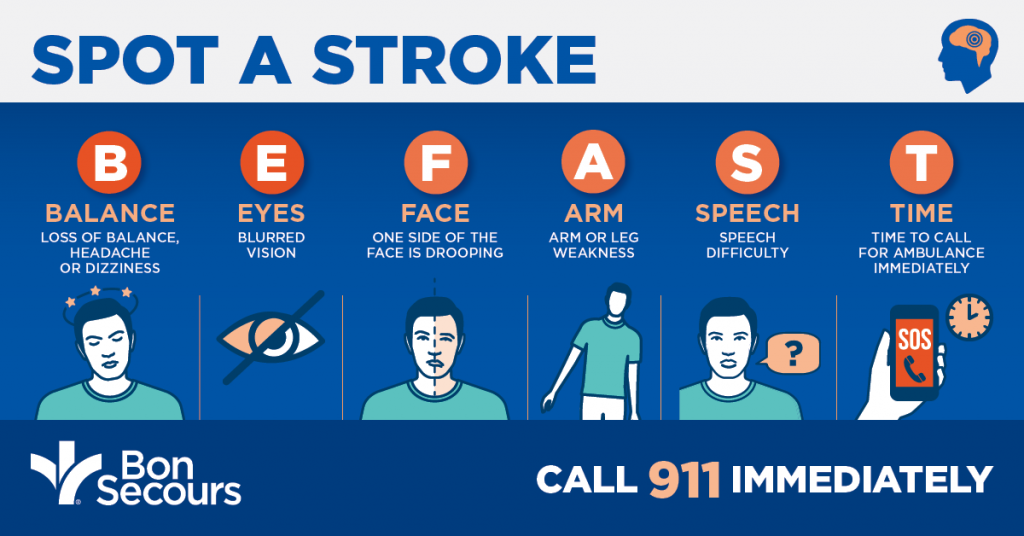Strokes are the third leading cause of death in the United States and can cause long-term disability. Most strokes affect people who are over the age of 65. However, a stroke can truly happen at any age.
Because having a stroke is serious, it helps to know the warning signs. That way, you can get yourself or someone you love help — fast.
What is a stroke?
A stroke happens when there’s not enough blood getting to your brain. The supply of blood going to your brain might get blocked in the large blood vessels that lead to your brain. Or, blood vessels around your brain tissue could burst.
Sometimes, a stroke is a massive brain attack. Other times, it could last a short time — 30 minutes or less. This is called a mini-stroke, or transient ischemic attack (TIA). Regardless of the type, a stroke needs immediate treatment and care.
Stroke signs and symptoms
A stroke can come on very quickly and suddenly. Warning signs depend on what type of stroke is happening. They also vary based on the part of the brain where the stroke occurs.
These warning signs can include:
- Abrupt inability to speak
- General overall confusion
- Onset of a severe headache
- Trouble understanding someone else speaking
- Trouble walking, dizziness and loss of balance
- Numbness or tingling of an arm or leg on one side of the body
- Numbness of the face, which could result in drooling and difficulty swallowing or breathing
If you see any of these symptoms, immediately call 911. Seek medical emergency help for yourself or another. Don’t waste time diagnosing the problem. Don’t wait to see if the symptoms go away on their own. Even if these symptoms seem to subside, they’re still an indication of a medical emergency.
When assessing a stroke BE FAST
To make it easier to assess the warning signs and symptoms of a stroke, learn the BE FAST test.
- B stands for balance: Is there a sudden loss of balance?
- E stands for eyes: Has vision been lost in one or both eyes?
- F stands for face: Is one side of the face drooping?
- A stands for arms: Raise both arms. Does one arm suddenly drop down?
- S stands for speech: Say something. Is the speech slurred or strange?
- T stands for time: If you’ve answered yes to any of the above questions, note the time the symptoms started and call for medical help right away.

What’s a silent stroke?
You can have a stroke and not even know you had one. It’s called a silent stroke.
As with regular strokes, blockages and bleeding cause silent strokes. But they happen in a part of the brain that affects subtle functioning, like memory or reasoning skills.
A silent stroke doesn’t have any of the dramatic warning signs that a regular stroke presents. Instead, the damaging results of a silent stroke show up on a brain scan.
The long-term effects of a silent stroke, which include:
- Depression
- Changes in walking
- Reasoning difficulties
- Mild or declining memory loss
Preventing a stroke
There are things you can do to reduce the chances of having a stroke. They include:
- Keeping an eye on your blood pressure
- Stop smoking
- Getting checked for diabetes
- Staying physically active
Learn more about the stroke treatment and care available at Bon Secours.





